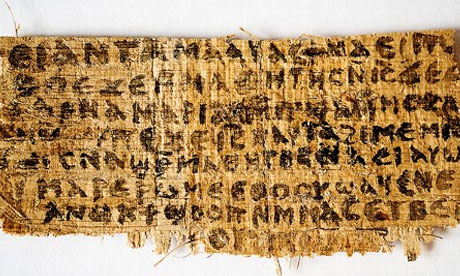The Vatican’s newspaper, L’Osservatore Romano, on Friday said a papyrus that appears to show an early Christian referring to Jesus’ wife “a fake.”
“Substantial reasons would lead us to conclude that the papyrus is actually a clumsy counterfeit,” the newspaper said in an editorial.
“In other words, in any case it is a fake,” wrote L’Osservatore Romano editor-in-chief Gian Maria Vian.
The fragment referring to Jesus wife was written in Coptic, a language used by Egyptian Christians, and says in part, “Jesus said to them, ‘My wife …”
The paper is generally thought to reflect the views of Vatican officials, a report on CNN said.
Karen King, a Harvard Divinity School professor, earlier announced the findings of the 1.5- by 3-inch honey-colored fragment in Rome.
King, in a draft of her analysis of the fragment, said the text “does not, however, provide evidence that the historical Jesus was married.”
“This fragment, this new piece of papyrus evidence, does not prove that (Jesus) was married, nor does it prove that he was not married,” King told reporters last month. “We don’t know if he was married or not.”
The New York Times in a report said suspicions that the papyrus was forged grew last week after Francis Watson, a New Testament scholar at Durham University in England, posted a paper online arguing that the text was cobbled together from phrases in the Gospel of Thomas.
That text was discovered in Nag Hammadi, Egypt, in 1945 among a cache of ancient manuscripts thought to have been written by early Christians known as Gnostics. However, experts say that kind of cobbling does not prove it was forged, because such amalgamations show up in authentic ancient texts as well.
The Vatican newspaper also published an analysis by a Coptic scholar Alberto Camplani who raised some issues with the papyrus and King’s reading of the text. Other ancient sources make no mention of Jesus’ conjugal situation, he wrote.
Camplani said he was also suspicious because the papyrus had been found on the antiquarian market and not through a dig. “Such an object demands that numerous precautions be taken to establish its reliability and exclude the possibility of forgery,” the New York Times report quoted Camplani.
Sources
